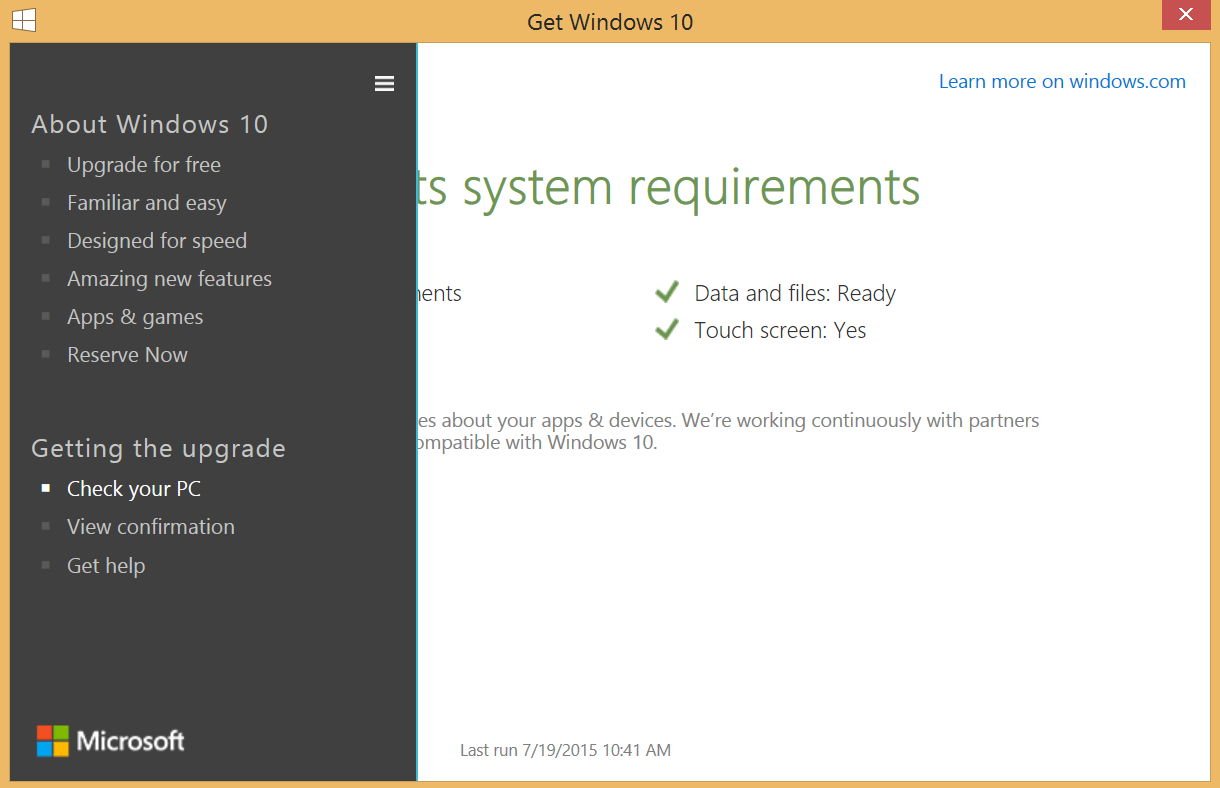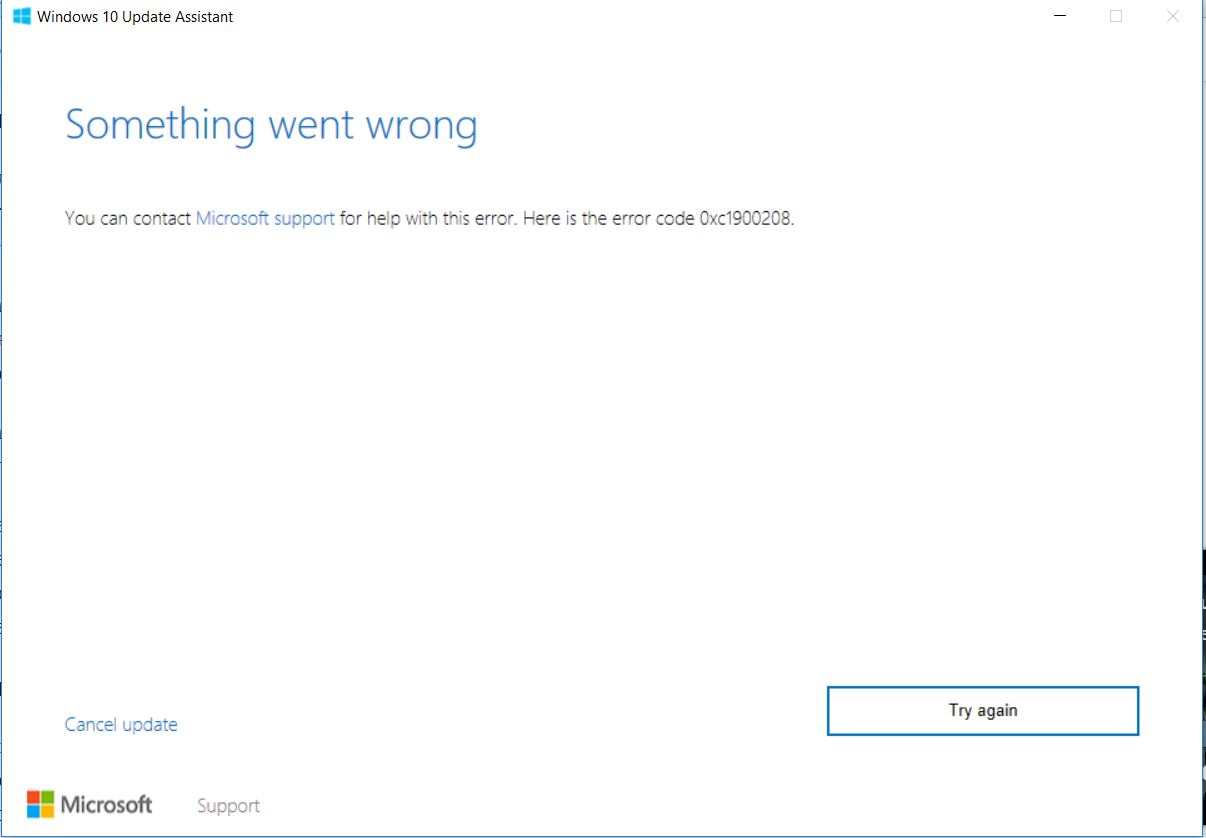Re- Failed Windows Update
Posted : admin On 18.09.2019Windows update failed 3 times and the. Simply disable your antivirus before downloading and installing the Windows 10 Anniversary Update. If you’re using Windows. If Windows Update fail. Any failed updates will have error. Log and try installing the problematic updates again. Now open the newly re-created WindowsUpdate.
Advertisement The recent The much anticipated August Update for Windows 8.1, formerly known as Update 2, has arrived and it's not what we expected; but then we already knew that. Is it even worth bothering? In short: YES!
Blindsided many users with issues. Some experienced BSODs or The B in BSOD doesn't always stand for blue. Sometimes you'll experience a Black Screen of Death.
This can be even more troublesome because it provides no error message. Let's troubleshoot together., while others found themselves stuck in an infinite reboot loop. If you’ve been negatively affected by a Is Windows Update enabled on your PC? Windows Update protects you from security vulnerabilities by keeping Windows, Internet Explorer, and Microsoft Office up-to-date with the latest security patches and bug fixes., here’s a quick list of troubleshooting steps that will help you restore Windows to a functional state.
Windows Crashes With A Blue Screen Of Death A BSOD typically hints to a hardware problem or faulty drivers, but can also be caused by third-party software. We have previously shown you Windows 8 isn't perfect. That said, most blue screens and application crashes aren't Windows' fault. Our tips will help you identify exactly what's wrong with your PC and fix it. In Windows 8. The August Update BSOD After applying the Windows August Update, many Windows 7 and 8 users experienced BSOD crashes with a 0x50 Stop error message.
According to Microsoft Community member xformer, KB2982791 is the culprit. This update causes Win32k.sys to crash when the font cache is not correctly maintained. According to Microsoft, August Update BSOD crashes are caused by the following updates, which subsequently have been disabled., a security update for kernel-mode drivers., the update introducing support for the Russion Ruble currency symbol., the August Update rollup for Windows RT 8.1, Windows 8.1, and Windows Server 2012 R2., the August Update rollup for Windows RT, Windows 8, and Windows Server 2012. How To Fix It A recommends to The days of reinstalling Windows when it acts up are long since gone. All you need to fix Windows 8 is a recovery disk, either on CD/DVD, a USB or an external hard disk drive.

And remove the following file: C: Windows System32 FNTCACHE.DAT In a response, community member Laurens (NLD) posted a step-by-step explanation on how to remove the file via the The command line lets you communicate directly with your computer and instruct it to perform various tasks. Briefly, insert your Windows 7 or 8 installation or recovery disk and boot from the disk. In Windows 7, go to restore options, choose repair tools, and select command prompt. In Windows 8, go to troubleshoot and advanced options, and select command prompt from here. Type the following command: del%windir% system32 fntcache.dat When the file is gone, you should be able to boot into Windows. Microsoft Support says this is only a temporary fix and they explain how to remove a registry key for a permanent solution.
Please see the for details. After removing the offending updates (see below), you can restore the registry file, the support page explains how this is done. I Can’t Boot Into Windows Anymore When a Windows Update is so bad that you can no longer boot the system, try booting into Safe Mode to remove it. To The Windows operating system is a complex structure that hosts a lot of processes. As you add and remove hardware and software, problems or conflicts can occur, and in some cases it can become very., hit the F8 key while the computer is booting up and before the Windows logo can be seen. Kithara music.
You know you hit the right moment, when you see the advanced boot options screen. When Windows 8 or 8.1 crashes repetitively, it should at some point In Safe Mode, you can troubleshoot and fix Windows issues. When you enter Safe Mode, Windows loads a minimal environment that ensures a stable system. Select Advanced options to access Safe Mode. You can In Safe Mode, you can troubleshoot and fix Windows issues.
When you enter Safe Mode, Windows loads a minimal environment that ensures a stable system. By pressing the SHIFT key while clicking Restart and subsequently click Restart under Sartup Settings, found under Troubleshoot and Advanced options.
Once you are in Safe Mode, you can navigate to Windows Update via the Control Panel and remove the most recent updates, see instructions below. Uninstall Windows Updates In Windows Uninstalling updates from within Windows is very simple. Briefly, navigate to Installed Updates ( View installed updates under Windows Update or Programs and Features) in the Control Panel, select the problematic update, and click the Uninstall button or right-click it and select Uninstall. Uninstall Windows Update Via Command Prompt When an issue with a Windows Update prevents your computer from booting, not even into Safe Mode, things get tricky.
You will need a Windows boot or recovery disk to launch into repair tools (Windows 7) or advanced options (Windows 8), from where you can access the command prompt. Assuming your system drive is C, type the following command to find the package names of the offending updates: dism /image:C: /get-packages Search the results for the update that needs to be removed and note down the package name. Then use the following command: dism /image:C: /remove-package/PackageName:Packageforinsertexactpackagenamehere Example: dism /image:C: /remove-package/PackageName:PackageforKB297689731bf3856ad364e35amd646.1.1.0 After removing the update, try to reboot and fingers crossed all will be well.
Hide Windows Updates Sometimes, updates are known to cause problems before you apply them. Or maybe you don’t accidentally want to re-install an update that made your computer crash. Navigate to Windows Update in the Control panel, right-click the troublesome update, and select Hide update. To restore a hidden update, click the respective link in the Windows Update sidebar. For a full walkthrough with screenshots of the process, see. None Of The Above Works The issues you’re experiencing may go deeper than a Windows Update bug. Please consult our Windows 8 isn't perfect.
That said, most blue screens and application crashes aren't Windows' fault. Our tips will help you identify exactly what's wrong with your PC and fix it. Windows 8 uses a new 'hybrid boot' feature to improve boot times. When you shut down, your computer doesn't actually shut down normally - it performs a sort of limited 'hibernate' that stores a state. Can be easy to resolve, but an Have you ever encountered an infinite reboot loop? It is instantly recognisable by the failure of Windows to correctly load up after switching on your PC or laptop.
Windows 10 Update Failed
Fortunately thanks to the way in which. May require a system recovery. If you’re able to boot into Windows 8 Advanced Startup Options, you can try to In addition to the standard System Restore feature, Windows 8 has features for 'refreshing' and 'resetting' your PC. Think of these as ways of quickly re-installing Windows - either keeping your personal files or deleting.
Has Windows Update Caused You Pain? Have you ever had to resolve issues caused by a Windows Update in the past? How did you do it? Let’s hear your experiences in the comments!
How to force Windows Update to re-download files by Sep 9, 2008 - 2:48 PM CST. Yesterday I had a similar Windows Update issue with two computers: my dad’s notebook that we loaned him and the MSI Wind. While the issues were the same on both notebooks, the timing was purely coincidental. My dad’s computer was stuck on the Windows XP SP3 update for some time; I only got a chance to check it last night. As for the Wind: I was running Windows Update because I had reinstalled XP earlier in the day again simply coincidence. On both machines, the updates were downloaded but failed to install.
In the case of my dad’s computer, it really gunked up the works because SP3 isn’t just a small file that needs tweaking. His machine would attempt to run the update each time he shut down and it would simply sit for hours and never install. I figured there was some corruption in the service pack file from when it was downloaded, so the trick was to remove the file and try again. Since you can’t easily tell Windows Update to re-download the file, you have to force it with this sequence.
From the Start, Run command: type services.msc and click OK. This will bring up the list of services Windows is running. Find the Automatic Updates service in the list and click Stop. Again from the Start, Run command, type%windir%softwaredistribution and click OK. This will navigate you to the files where Windows Update are downloaded to.
You should now see a folder labeled 'Download'. Open it and delete the files. Note that this deletes the installation files for all installed Windows Updates. Some folks may feel more comfortable by leaving the files there but renaming the Downloads folder to something else. In the list of services, restart the Automatic Updates service.

By doing this, I was able to get Windows Update to think that it had essentially never downloaded Service Pack 3 for XP since the file was no longer there. I ran Windows Update, got the service pack downloaded again and it installed without a hitch. I’m sure there are many possible solutions for this type of scenario, but if you face this problem, this is worth a try.
Bear in mind that this was done on Windows XP; the update mechanism might be different in Vista. I also recommend either using the troubleshooter in Windows Update or searching the web for any specific error numbers should you run into problems with updates.